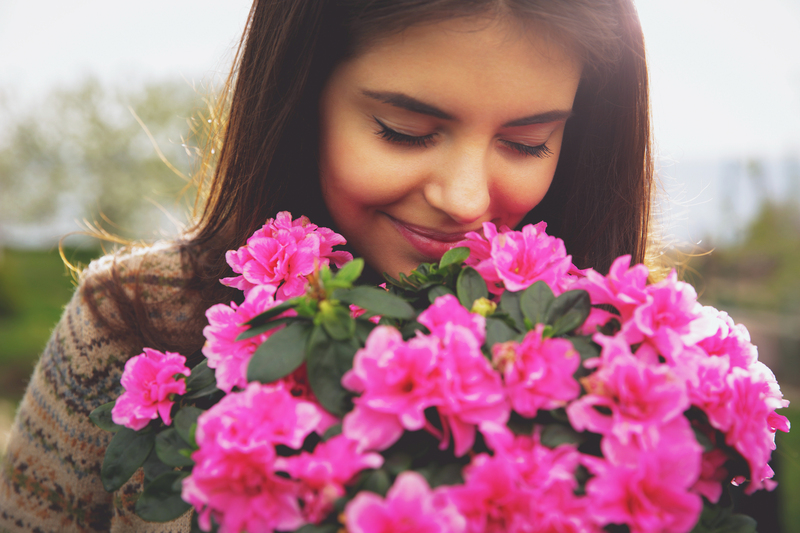Unlocking the Secrets of Orchid Care
Posted on 03/07/2025
Unlocking the Secrets of Orchid Care: The Ultimate Guide for Lush, Healthy Orchids
Are you captivated by the delicate beauty of orchids but find them intimidating to grow? You're not alone! Orchid care has long been shrouded in mystery, leading many plant lovers to believe these exotic flowers are difficult or even impossible to keep alive. But with the right knowledge, anyone can unlock the secrets of orchid care and cultivate thriving, blooming plants at home.
In this comprehensive guide, we'll demystify the world of orchids and reveal expert tips and tricks for successful orchid growing. Whether you're a novice or a seasoned collector, you'll discover actionable advice to nurture your plants and enjoy their stunning blooms year-round.

Understanding Orchids: More Than Just Beautiful Blooms
Before diving into practical orchid care tips, it's important to understand what makes these flowers unique. Orchids belong to one of the largest and oldest families of flowering plants, with over 25,000 species and countless hybrids. Their diversity ensures there's an orchid for every taste and environment but also means that care requirements can differ significantly between types. However, most popular orchids, such as Phalaenopsis, Cattleya, Dendrobium, and Oncidium, share similar basic needs.
The Anatomy of an Orchid: Key Features
- Pseudobulbs or fleshy stems for water storage
- Thick, leathery leaves designed for water conservation
- Aerial roots that absorb moisture and nutrients from the air
- Exquisite flowers with intricate patterns and fragrances
Understanding these traits will help you create the ideal environment for your orchids to flourish.
Essential Orchid Care Tips for Beginners and Enthusiasts
1. Choosing the Right Orchid Species
For beginners, Phalaenopsis or "moth orchids" are an excellent choice due to their adaptability and resilience. Other friendly options include Dendrobium and Oncidium. Advanced growers may want to experiment with more demanding species like Cattleya or Vanda. When buying, always choose healthy plants with firm green leaves and unblemished roots.
2. Light: The Most Crucial Element in Orchid Care
Light is the most common stumbling block in orchid care. Orchids thrive in bright, indirect sunlight. Too little light will result in weak, non-blooming plants. Too much sun can cause scorched leaves.
- South- or east-facing windows: best sources for ample, gentle light
- Filtered curtains: help diffuse intense sunlight
- Leaf color as a guide: Healthy orchids have light, grassy-green leaves. Dark foliage signals too little light; yellowing or red-tinged leaves suggest too much light.
Pro-tip: If natural light is insufficient, use a full-spectrum LED grow light positioned 12-18 inches above the plant for 10-12 hours a day.
3. Watering Your Orchid: Finding the Perfect Balance
Overwatering is the number one killer of orchids. Their roots require as much air as they do water. Here's how to master your orchid watering routine:
- Use a well-draining orchid mix, such as bark, sphagnum moss, or perlite
- Water only when the top inch of medium is dry (usually every 7-10 days for most orchids)
- Thoroughly soak the roots, then let excess water drain out
- Never let orchids sit in standing water--this promotes rot
Tip: Water in the morning so leaves dry before nightfall, helping prevent fungal diseases.
4. Humidity and Air Circulation: The Tropical Secret
Orchids hail from humid jungles, so humidity is a key to robust orchid health. Most orchid varieties prefer humidity levels between 50% and 70%.
- Group orchids together to create a microclimate
- Use a humidity tray filled with pebbles and water beneath the pot (but not letting the roots touch the water)
- Mist plants gently (avoid soaking blooms or crown)
- Good air circulation is vital - use a small fan nearby, especially in closed or stagnant rooms
5. Feeding and Fertilizing: Nourishing Your Orchids
Orchids benefit from regular, light feeding during active growth.
Follow the rule: "weakly, weekly".
- Use a balanced orchid fertilizer (20-20-20 or similar) diluted to one-quarter strength
- Fertilize once a week while your orchid is growing (usually spring to fall)
- Flush the potting mix with plain water monthly to remove salt buildup
- Reduce or pause feeding during winter dormancy
Repotting Orchids: Renewal for Better Blooms
Over time, orchid potting medium breaks down and begins to suffocate the roots. Repot your orchid every 1-2 years, ideally just after flowering.
- Use a specially formulated orchid mix
- Gently trim away dead roots
- Never bury aerial roots - they need contact with air
- Choose a pot just big enough for the root mass, with ample drainage
Note: A newly repotted orchid may pause blooming as it adjusts to its fresh environment.
Encouraging Re-Bloom: How to Get Your Orchids to Flower Again
Unlocking the secret to re-blooming orchids is about sending the right signals!
After blooming, many orchids require a rest period before they flower again.
- For Phalaenopsis: Once the blooms fall, trim the spike back to the first healthy node. This can stimulate a secondary bloom.
- For other genera: Cut spent spikes low to the base, and provide slightly cooler nighttime temperatures (10?F/6?C drop) for a few weeks to encourage new spikes.
Patience is key! Some orchids may take several months to re-bloom, but proper care will reward you with spectacular displays.
Common Orchid Care Problems and Solutions
Even seasoned growers encounter issues. The good news is most orchid troubles have straightforward solutions.
- Yellow leaves: Usually a sign of overwatering or root rot. Check the medium and roots, adjust watering frequency, and improve drainage.
- Leaf drop: Can be caused by sudden drafts, cold shock, or lack of humidity. Keep orchids away from vents or unheated windows and boost humidity.
- No blooms: Typically due to insufficient light or incorrect temperature cycles. Move plant to a brighter spot and ensure it receives cooler nights ahead of bloom season.
- Spotting or pests: Keep an eye out for aphids, scale, or mealybugs. Remove pests with a cotton swab dipped in alcohol and increase airflow to prevent fungal infections.
Special Orchid Care Tips: Expert Tricks for Stunning Results
- Rotate your orchids every couple of weeks for even light exposure and balanced growth.
- Don't repot when in bloom -- stress can cause flowers to drop prematurely.
- Check leaves and roots regularly for early signs of trouble.
- Use rainwater or distilled water if your tap water is hard, as minerals can damage sensitive roots.
- Label your orchids with the species and repotting date for easy reference.
Orchid Varieties: Choosing the Perfect Orchid for Your Home
Below are a few popular orchid types and their unique care requirements.
- Phalaenopsis: Loves moderate light and steady hydration; blooms can last months!
- Cattleya: Needs more sun and prefers to dry out between watering.
- Dendrobium: Tolerates slightly cooler temperatures and a defined rest period.
- Oncidium: Enjoys high humidity and frequent, light waterings.
- Vanda: Demands tons of light and daily watering, ideal for advanced growers.
Research your specific orchid's name to unlock tailored care guidelines!

Frequently Asked Questions about Excellent Orchid Care
- How often should I water my orchid? Typically, every 7 to 10 days--let the medium dry out slightly between waterings.
- Why are my orchid's leaves turning yellow? Overwatering, poor drainage, or aging leaves are the main causes.
- Can I use regular potting soil? No! Regular soil retains too much moisture. Orchids need a special mix like bark or moss.
- Do orchids need to be misted? Misting can help boost humidity but shouldn't be the only method. Avoid soaking flowers and leaf crowns.
- How do I get my orchid to re-bloom? Give it bright but indirect light and a slight drop in nighttime temperatures for several weeks.
Conclusion: Unlocking the Lasting Joy of Orchid Care
Unlocking the secrets of orchid care isn't as difficult as it may appear! With a little knowledge, patience, and consistent attention, you can transform your home into a tropical oasis filled with long-lasting, jaw-dropping orchid blooms. Remember to focus on the essentials: light, water, humidity, nutrition, and the occasional refresh in a new pot. Troubleshoot promptly, experiment with varieties, and above all, enjoy the process of nurturing these magnificent plants.
Start your orchid journey today--every seasoned enthusiast started with a single plant! As you unlock the world of successful orchid growing, you'll be rewarded with not just beautiful flowers, but the satisfying sense of accomplishment that comes from mastering the art of orchid care.
Happy growing!
Latest Posts
Keep Your Poinsettias Vibrant All Season Long
Enchanting Blooms for Birthday Surprises
Discover the Top 12 Long-Lasting Flowers for Your Home







